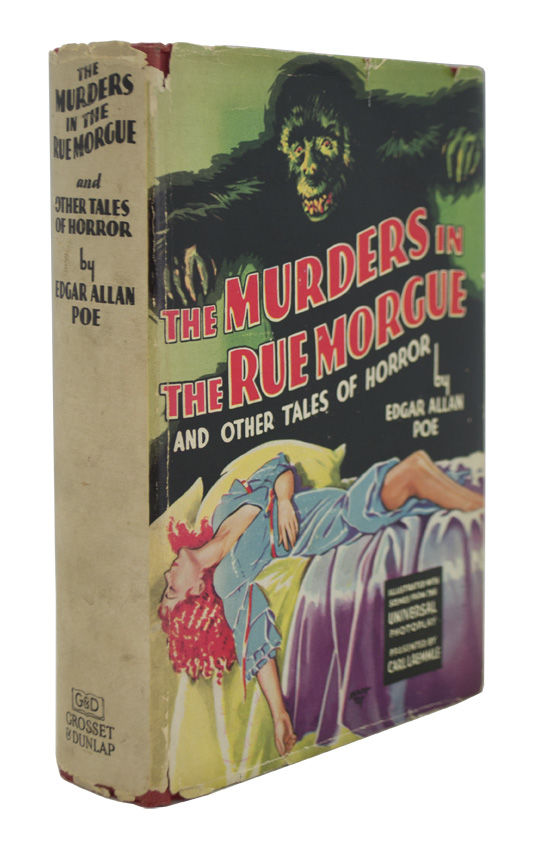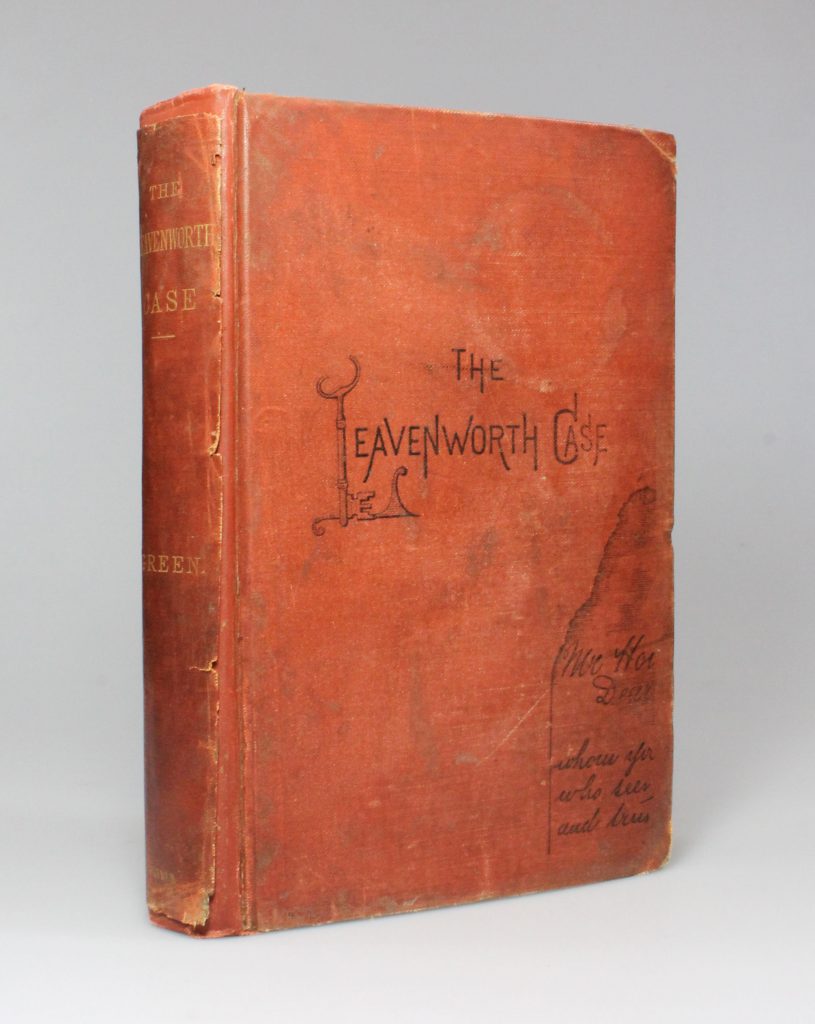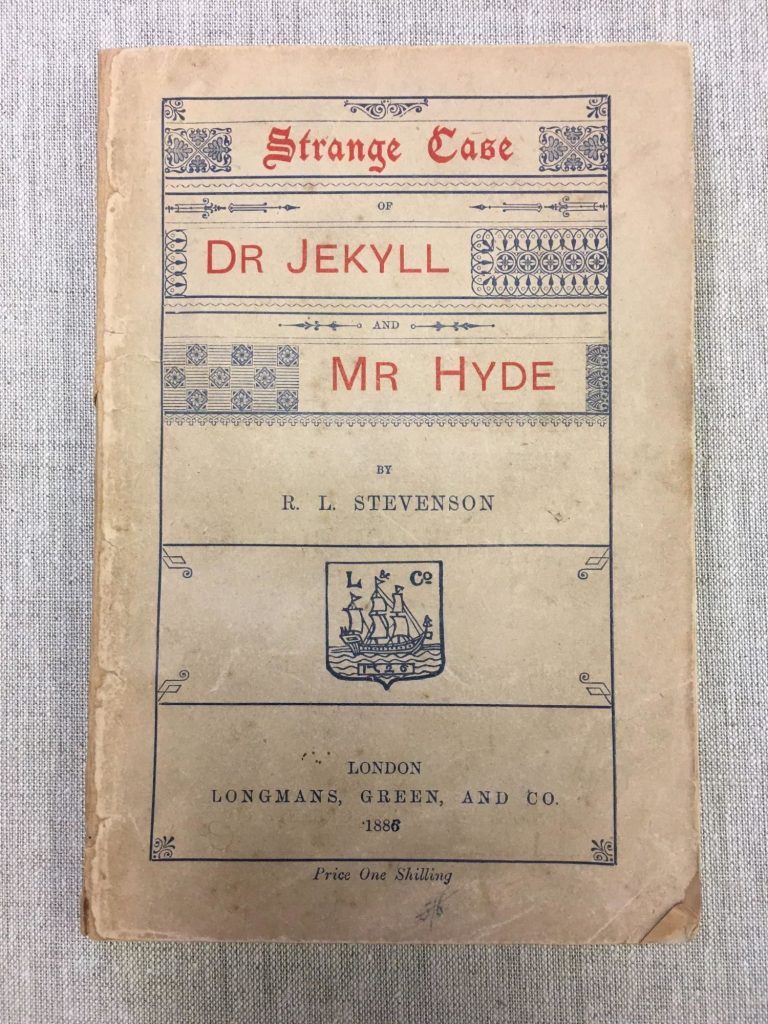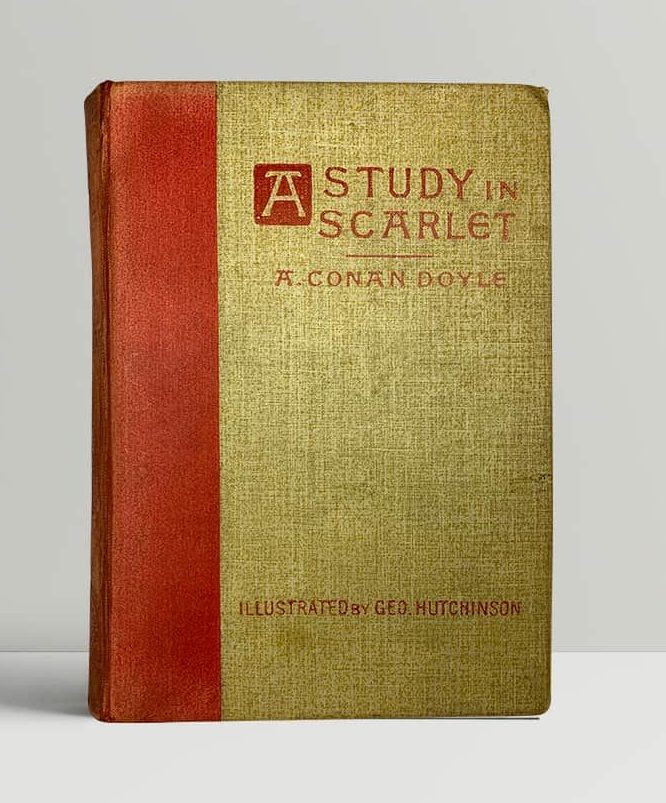What exactly is a mystery book?
In a mystery novel, a crime is committed. The crime is commonly a murder, but thefts or kidnappings are also popular. The action of the story revolves around the solution of that crime – determining who did it and why, and ideally achieving some form of justice.
There are many specific subtypes within the mystery genre: police procedurals, hard-boiled detective stories, espionage thrillers, medical or forensic mysteries, cozy mysteries, closed-room mysteries, and courtroom dramas, to name a few. As myriad as they sound, they all sprouted from the same authors and history.

The beginning of the mystery genre
The rapid growth of urban centers in the 19th century meant that more police were needed. This spurred the advent of professional detectives whose chief job was to investigate crimes. Although there are examples of puzzle stories that reach back through time to when some of the earliest poems or tales were written down, most people agree that the first modern ‘detective story’ is The Murders in the Rue Morgue by Edgar Allan Poe. First published in the April 1841 issue of Graham’s Magazine, the short story tells the tale of an amateur detective who sets out to solve the grisly murders of a mother and daughter within a locked room of their apartment on the Rue Morgue.
Nearly twenty years after Poe’s story, Wilkie Collins published The Woman in White (1859), which is considered the first mystery novel, and The Moonstone (1868), generally considered the first detective novel. The Woman in White is a gripping tale of murder, madness and mistaken identity that is so beloved it has never been out of print. Collins had “Author of The Woman in White and other works of fiction” engraved on his tombstone. The Moonstone set the standards for the detective novel formula – an enormous diamond is stolen from a Hindu temple and resurfaces at a birthday party in an English manor, and with numerous narrators and suspects, the story weaves through superstitions, romance, humor and suspicion to solve the puzzle.
The Moonstone’s title as the first detective novel is contested by two other books. The first, The Notting Hill Mystery, was published in 1865 and written under the pen name Charles Felix, who is believed to be Charles Warren Adams, sole proprietor of the publishing house Saunders, Otley, and Company. In The Notting Hill Mystery, the main character figures out the culprit of murder through diary entries, family letters, chemical analysis, depositions, and a crime scene map. Many of these detective techniques were not used again until the novels of the 1920s.
A French mystery, L’Affaire Lerouge (1866) by Émile Gaboriau, is also considered a pioneering detective novel. One of the first stories to use the gathering of evidence to solve the murder mystery, it combines police intrigue and a love story – two mothers, two sons, and one father (a Count). L’Affaire Lerouge, first published in English as The Widow Lerouge or The Lerouge Case, introduced the concept of an amateur detective as well as a recurring character trope, featuring a young police officer named Monsieur Lecoq who was featured in several of Gaboriau’s later novels.
The rapid growth of urban centers in the 19th century meant that more police were needed. This spurred the advent of professional detectives whose chief job was to investigate crimes. Although there are examples of puzzle stories that reach back through time to when some of the earliest poems or tales were written down, most people agree that the first modern ‘detective story’ is The Murders in the Rue Morgue by Edgar Allan Poe. First published in the April 1841 issue of Graham’s Magazine, the short story tells the tale of an amateur detective who sets out to solve the grisly murders of a mother and daughter within a locked room of their apartment on the Rue Morgue.
Nearly twenty years after Poe’s story, Wilkie Collins published The Woman in White (1859), which is considered the first mystery novel, and The Moonstone (1868), generally considered the first detective novel. The Woman in White is a gripping tale of murder, madness and mistaken identity that is so beloved it has never been out of print. Collins had “Author of The Woman in White and other works of fiction” engraved on his tombstone. The Moonstone set the standards for the detective novel formula – an enormous diamond is stolen from a Hindu temple and resurfaces at a birthday party in an English manor, and with numerous narrators and suspects, the story weaves through superstitions, romance, humor and suspicion to solve the puzzle.
The Moonstone’s title as the first detective novel is contested by two other books. The first, The Notting Hill Mystery, was published in 1865 and written under the pen name Charles Felix, who is believed to be Charles Warren Adams, sole proprietor of the publishing house Saunders, Otley, and Company. In The Notting Hill Mystery, the main character figures out the culprit of murder through diary entries, family letters, chemical analysis, depositions, and a crime scene map. Many of these detective techniques were not used again until the novels of the 1920s.
A French mystery, L’Affaire Lerouge (1866) by Émile Gaboriau, is also considered a pioneering detective novel. One of the first stories to use the gathering of evidence to solve the murder mystery, it combines police intrigue and a love story – two mothers, two sons, and one father (a Count). L’Affaire Lerouge, first published in English as The Widow Lerouge or The Lerouge Case, introduced the concept of an amateur detective as well as a recurring character trope, featuring a young police officer named Monsieur Lecoq who was featured in several of Gaboriau’s later novels.
Early Mystery Novels
The Dead Letter, published in 1866 by Beadle’s Monthly Magazine, is credited with being the first detective story by a woman. It was written under the name Seeley Regester, a nom de plume for author Metta Victoria Fuller Victor who wrote more than 100 dime novels. The Dead Letter is also the first full-length American work of crime fiction.
In 1878, Anna Katherine Green introduced the first American detective in The Leavenworth Case. The Leavenworth Case is widely noted as one of the first American bestsellers, selling 750,000 copies in its first decade and a half of publication. Green would pave the way for many prolific and talented women writers in the genre.
But unlike The Leavenworth Case that eventually fell out of favor and out of print, Robert Louis Stevenson, who had success with Treasure Island in 1883, published the classic mystery The Strange Case of Dr. Jekyll and Mr. Hyde in 1886. Initially sold as a ‘penny dreadful’ in the UK and US, more than 40,000 copies of the book had been sold within six months, and soon after more than 250,000 copies were pirated in America. The book and its characters have infiltrated not only literature but also film, television, and popular culture ever since.
The Dead Letter, published in 1866 by Beadle’s Monthly Magazine, is credited with being the first detective story by a woman. It was written under the name Seeley Regester, a nom de plume for author Metta Victoria Fuller Victor who wrote more than 100 dime novels. The Dead Letter is also the first full-length American work of crime fiction.
In 1878, Anna Katherine Green introduced the first American detective in The Leavenworth Case. The Leavenworth Case is widely noted as one of the first American bestsellers, selling 750,000 copies in its first decade and a half of publication. Green would pave the way for many prolific and talented women writers in the genre.
But unlike The Leavenworth Case that eventually fell out of favor and out of print, Robert Louis Stevenson, who had success with Treasure Island in 1883, published the classic mystery The Strange Case of Dr. Jekyll and Mr. Hyde in 1886. Initially sold as a ‘penny dreadful’ in the UK and US, more than 40,000 copies of the book had been sold within six months, and soon after more than 250,000 copies were pirated in America. The book and its characters have infiltrated not only literature but also film, television, and popular culture ever since.
The first edition of Strange Case of Dr. Jekyll and Mr. Hyde listed by Second Story Books
1886 was also the year The Mystery of a Handsom Cab was published in Australia, written by Fergus Hume. The mystery about a body discovered in a Handsom cab in the city of Melbourne was very successful in Australia, and it went on to be published in America and Britain, selling over 500,000 copies worldwide. The Mystery of a Handsom Cab initially outsold a new release by Arthur Conan Doyle, one that introduced a character that would soon take over the world of detective fiction.
In 1887, Arthur Conan Doyle sold the rights to a story called A Study in Scarlet for £25. It was published first in Beeton’s Christmas Annual, and later in 1888 as a novel by Ward, Lock & Co. Doyle was 27 years old when it was published and wrote the story in a reported three weeks. A Study in Scarlet was the first work to feature Sherlock Holmes and Dr. Watson. Doyle went on to write 56 short stories featuring Holmes and a total of four full-length novels in what is considered the Canon of Sherlock Holmes. The novels in the Canon following A Study in Scarlet are The Sign of Four (1890), The Hound of the Baskervilles (1901-1902) and The Valley of Fear (1914-1915).
1886 was also the year The Mystery of a Handsom Cab was published in Australia, written by Fergus Hume. The mystery about a body discovered in a Handsom cab in the city of Melbourne was very successful in Australia, and it went on to be published in America and Britain, selling over 500,000 copies worldwide. The Mystery of a Handsom Cab initially outsold a new release by Arthur Conan Doyle, one that introduced a character that would soon take over the world of detective fiction.
In 1887, Arthur Conan Doyle sold the rights to a story called A Study in Scarlet for £25. It was published first in Beeton’s Christmas Annual, and later in 1888 as a novel by Ward, Lock & Co. Doyle was 27 years old when it was published and wrote the story in a reported three weeks. A Study in Scarlet was the first work to feature Sherlock Holmes and Dr. Watson. Doyle went on to write 56 short stories featuring Holmes and a total of four full-length novels in what is considered the Canon of Sherlock Holmes. The novels in the Canon following A Study in Scarlet are The Sign of Four (1890), The Hound of the Baskervilles (1901-1902) and The Valley of Fear (1914-1915).
This copy of A Study in Scarlet belonged to John Keynes. Listed by John Atkinson.
Mary Roberts Rinehart published The Circular Staircase in 1908, creating the ‘had I but known’ school of mystery writing. The Circular Staircase, about a spinster aunt who solves mysteries at a rented summer house, became a best-seller and made Rinehart a household name. She wrote hundreds of stories and forty novels. At her death, her novels had sold 10 million copies, and it is said at her prime she sold more books than Agatha Christie, to whom she’s often compared, although many of her works pre-date Christie’s.
The Innocence of Father Brown (1911), a collection of 12 stories, started the prolific career of G. K. Chesterton, who is credited with being the father of the ‘cozy’ mystery. Father Brown solved crimes more by intuition and a deep understanding of human nature than by experimentation and scientific deduction.
1915’s The Thirty-Nine Steps by John Buchan is one of the earliest ‘man-on-the-run thrillers that would later be a popular plot device for mysteries and often used in movies as well. In the novel, Richard Hannay, an expatriate Scot, is an ordinary man met by extraordinary circumstances, who puts his own safety and interests aside to protect his country at the outset of WWI. The novel was very popular with troops during the First World War, and the author followed it up with multiple sequels.
And into the Golden Age…
These books all led up to what is considered ‘The Golden Age’ of crime writing in the 1920s and 1930s. Many of the most beloved authors of this period were British and writing in either the ‘cozy’ or ‘country house’ mystery style. Agatha Christie, Dorothy Sayers, Margery Allingham, and Ngaio Marsh are often dubbed the Queens of this Golden Age. Quite a few American writers followed suit until some broke out in a distinct ‘hard-boiled’ style as “pulp” novels were popularized.
The popularity of detective fiction waned with the outbreak of WWII, never again reaching the peak of the Golden Age, yet many mystery books continue to be published and consumed in the subsequent decades.
Mary Roberts Rinehart published The Circular Staircase in 1908, creating the ‘had I but known’ school of mystery writing. The Circular Staircase, about a spinster aunt who solves mysteries at a rented summer house, became a best-seller and made Rinehart a household name. She wrote hundreds of stories and forty novels. At her death, her novels had sold 10 million copies, and it is said at her prime she sold more books than Agatha Christie, to whom she’s often compared, although many of her works pre-date Christie’s.
The Innocence of Father Brown (1911), a collection of 12 stories, started the prolific career of G. K. Chesterton, who is credited with being the father of the ‘cozy’ mystery. Father Brown solved crimes more by intuition and a deep understanding of human nature than by experimentation and scientific deduction.
1915’s The Thirty-Nine Steps by John Buchan is one of the earliest ‘man-on-the-run thrillers that would later be a popular plot device for mysteries and often used in movies as well. In the novel, Richard Hannay, an expatriate Scot, is an ordinary man met by extraordinary circumstances, who puts his own safety and interests aside to protect his country at the outset of WWI. The novel was very popular with troops during the First World War, and the author followed it up with multiple sequels.
And into the Golden Age…
These books all led up to what is considered ‘The Golden Age’ of crime writing in the 1920s and 1930s. Many of the most beloved authors of this period were British and writing in either the ‘cozy’ or ‘country house’ mystery style. Agatha Christie, Dorothy Sayers, Margery Allingham, and Ngaio Marsh are often dubbed the Queens of this Golden Age. Quite a few American writers followed suit until some broke out in a distinct ‘hard-boiled’ style as “pulp” novels were popularized.
The popularity of detective fiction waned with the outbreak of WWII, never again reaching the peak of the Golden Age, yet many mystery books continue to be published and consumed in the subsequent decades.
We’ll be taking a look at the most collectible mystery novels in our Book Collecting By the Year series starting on January 30. Want to get updates in your inbox when we add a new decade? Join our mailing list here.
Amber
Amber is the current marketing coordinator at Biblio. A lifelong love of the written word brought her to Biblio and she happily spends her days talking about books and delving into the wide world of antiquarian books.
You can also find her in the garden or writing about brewing and plant adventures at Pixie’s Pocket.



No comments:
Post a Comment